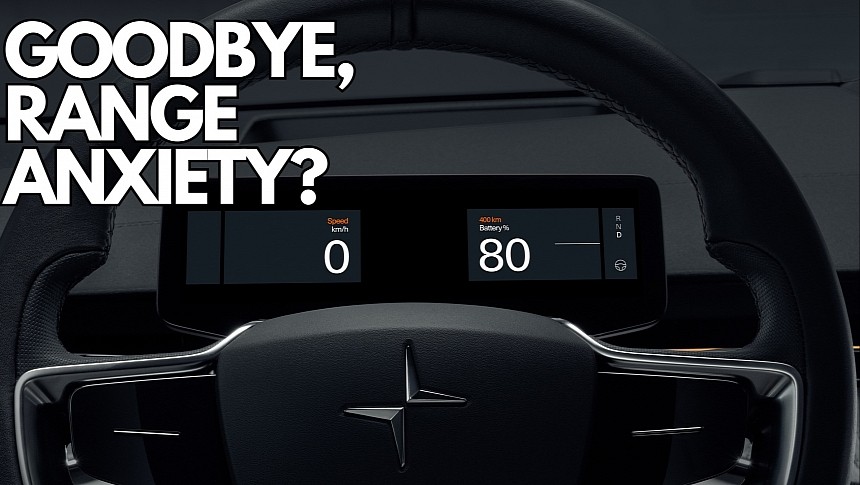I don't know about you, but whenever I drive an EV, I check the range every few seconds. I know it's not the right way to drive an electric vehicle, but for me, it's confirmation that the range anxiety is real.
Carmakers have been trying to address this shortcoming of zero-emission vehicles for quite some time, but while their efforts improved the overall experience behind the wheel, they still didn't eliminate the anxiety.
Now, navigation specialist HERE has come up with a new approach that could help carmakers in this regard.
A new solution presented at CES has a simple goal: to help the vehicle offer more accurate range predictions, eventually helping drivers know precisely how much they can drive before needing a recharge.
HERE EV Range Factors is based on an unfortunate drawback of the on-board estimates. The parent company explains that the range you see on the dashboard typically uses historical data from previous trips without taking into account dynamic factors, such as traffic conditions and real-time impacts.
It's why HERE's resources step in. The company doesn't want to solve the problem on its own but help automakers, some of which already use its software for navigation and other capabilities, to offer more relevant estimates.
To do this, HERE will share road topography data, which will feed more information into the vehicle's range estimation system, including upcoming road elevation, slope, curvature, and roughness. When you configure navigation in an EV running HERE's software, the system can look at the route, collect all these details, and estimate the range more accurately.
HERE says the EV Range Factors package includes predictive outside ambient temperature data and road surface temperature data. These values can significantly impact the EV driving range, so it's critical for the vehicle to take them into account when calculating the range and eventually address the range anxiety.
Eventually, HERE's analysis also includes predictive wind speed and direction, refining the calculation with data expected at the road surface level for a more accurate estimate.
HERE's solution helps automakers estimate the range based on data they wouldn't otherwise obtain, expanding the calculation beyond the vehicle. It's a massive upgrade that could substantially improve the EV driving experience, though we're still a long way from ensuring a hassle-free time behind the wheel of an EV.
The first zero-emission vehicles fitted with HERE EV Range Factors are expected to hit the road in mid-2024, though the parent company hasn't yet revealed the carmakers that will adopt the technology this year. However, certain features will only be available in limited markets, including the temperature and the wind coverage, which will only debut in Europe and North America. HERE says the road topography supports 60 countries and is already available today in its software.
Now, navigation specialist HERE has come up with a new approach that could help carmakers in this regard.
A new solution presented at CES has a simple goal: to help the vehicle offer more accurate range predictions, eventually helping drivers know precisely how much they can drive before needing a recharge.
HERE EV Range Factors is based on an unfortunate drawback of the on-board estimates. The parent company explains that the range you see on the dashboard typically uses historical data from previous trips without taking into account dynamic factors, such as traffic conditions and real-time impacts.
It's why HERE's resources step in. The company doesn't want to solve the problem on its own but help automakers, some of which already use its software for navigation and other capabilities, to offer more relevant estimates.
To do this, HERE will share road topography data, which will feed more information into the vehicle's range estimation system, including upcoming road elevation, slope, curvature, and roughness. When you configure navigation in an EV running HERE's software, the system can look at the route, collect all these details, and estimate the range more accurately.
HERE says the EV Range Factors package includes predictive outside ambient temperature data and road surface temperature data. These values can significantly impact the EV driving range, so it's critical for the vehicle to take them into account when calculating the range and eventually address the range anxiety.
Eventually, HERE's analysis also includes predictive wind speed and direction, refining the calculation with data expected at the road surface level for a more accurate estimate.
HERE's solution helps automakers estimate the range based on data they wouldn't otherwise obtain, expanding the calculation beyond the vehicle. It's a massive upgrade that could substantially improve the EV driving experience, though we're still a long way from ensuring a hassle-free time behind the wheel of an EV.
The first zero-emission vehicles fitted with HERE EV Range Factors are expected to hit the road in mid-2024, though the parent company hasn't yet revealed the carmakers that will adopt the technology this year. However, certain features will only be available in limited markets, including the temperature and the wind coverage, which will only debut in Europe and North America. HERE says the road topography supports 60 countries and is already available today in its software.








